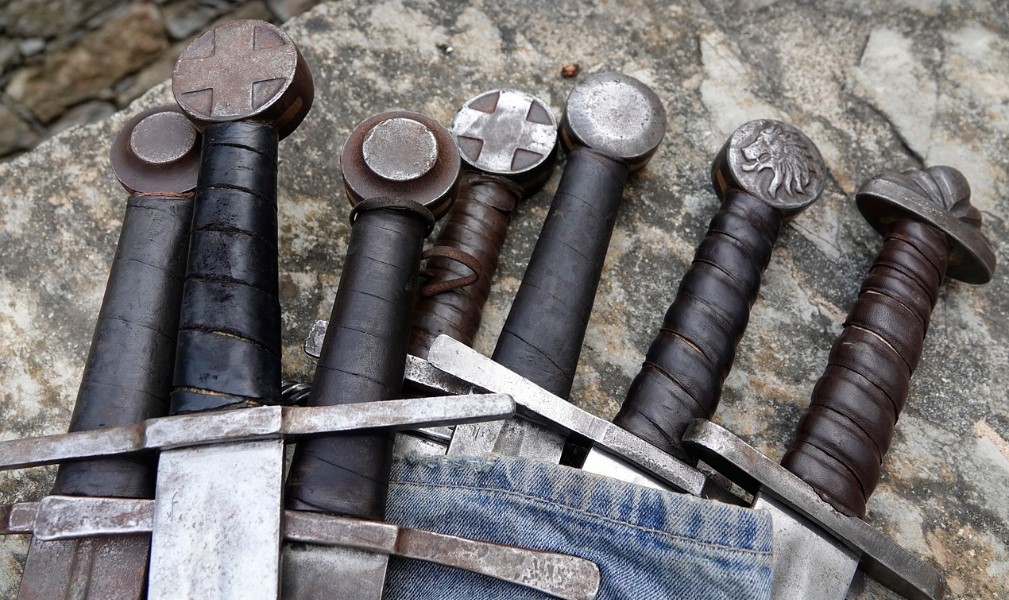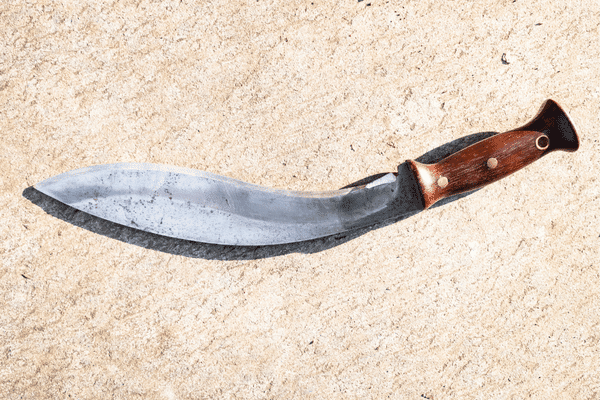Unveiling the World of Swords: A Journey Through Diverse Sword Types.
Introduction: The Allure of Blades
In the vast tapestry of history, swords have emerged as enduring symbols of power, honor, and martial prowess. From the elegant katana of Japan to the mighty broadswords of medieval Europe, the world of swords is as diverse as the cultures that forged them. This article takes you on a captivating journey through some of the most iconic sword types, each with its unique design, purpose, and historical significance.
I. The Katana: Japan's Elegance in Steel
The katana, with its gracefully curved blade and rich cultural heritage, stands as a testament to Japan's mastery of swordcraft. Originating from the samurai era, the katana's design focuses on precision, balance, and the seamless marriage of form and function. Renowned for its use in the disciplined martial art of kenjutsu, the katana embodies not just a weapon but a philosophy of honor and respect.
II. Broadswords: The Mighty Blades of Medieval Europe
The term "broadsword" encompasses a variety of large, double-edged swords that played pivotal roles in medieval European warfare. Ranging from the Viking swords of the early medieval period to the arming swords and longswords of the later eras, these blades were wielded by knights, mercenaries, and warriors alike. The broadsword's versatility in both slashing and thrusting made it a formidable weapon on the chaotic battlefields of medieval Europe.
III. The Rapier: Elegance in Dueling
Transitioning from the battlefield to the dueling grounds, the rapier emerged during the Renaissance as a symbol of refined combat. With its slender, sharply pointed blade and elaborate hilt, the rapier was favored by gentlemen and skilled fencers. Known for its use in one-on-one duels, the rapier represented not only a weapon but a fashion statement, embodying the sophistication and grace of the Renaissance elite.
IV. Scimitars: The Curved Blades of the Middle East
Venturing into the Middle East, we encounter the Scimitar, a sword with a distinctive curved blade that has left an indelible mark on the region's history. Popularized by cultures such as the Persians and Ottomans, the scimitar excelled in both mounted and infantry combat. Its design allowed for devastating slashes, making it an iconic weapon associated with the skilled cavalry of the Middle East.
V. Jian: The Graceful Chinese Straight Sword
Stepping into the realm of Chinese martial arts, the jian, or straight sword, takes center stage. Characterized by its slender, double-edged blade and ornate hilt, the Jian sword is a symbol of discipline and precision. Wielded in traditional Chinese martial arts like Tai Chi and Kung Fu, the jian emphasizes fluid movements and the harmonious integration of mind and body.
VI. Cutlasses: The Swashbuckling Blades of the Sea
In the maritime world, the cutlass sword became the weapon of choice for sailors and pirates during the Age of Sail. With a short, single-edged blade and a slightly curved design, cutlasses were ideal for close-quarters combat aboard ships. These swashbuckling blades, often adorned with intricate hilts, became synonymous with seafaring adventurers and the golden age of piracy.
VII. Claymore: The Scottish Sword of Legends
Venturing to the misty highlands of Scotland, we encounter the claymore, a massive two-handed sword that evokes images of fierce Highland warriors. With a distinctive cross-hilt and a blade that could reach over four feet in length, the claymore was a symbol of Scottish martial prowess. Whether in battle or as a symbol of clan identity, the claymore remains a potent icon in Scottish history.
VIII. Machete: The Practical Blade of the Jungle
While not a traditional sword in the classical sense, the Machete deserves a place in our exploration. Originating in tropical regions, the machete's simple and effective design makes it an indispensable tool for survival in dense jungles. Its versatility extends from clearing vegetation to serving as an improvised weapon, highlighting the practicality of blades beyond the battlefield.
Conclusion: A Tapestry of Blades
The world of swords is a rich tapestry woven with threads of history, culture, and craftsmanship. Each sword type carries with it a unique story, reflecting the values and challenges of the cultures that forged these iconic blades. From the disciplined elegance of the katana to the swashbuckling cutlasses of the high seas, the diversity of sword types invites us to explore the fascinating intersection of art, warfare, and human ingenuity.






Comments
Post a Comment